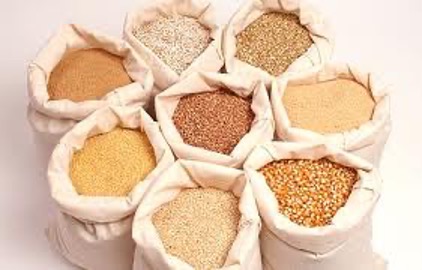QUALITY SEED IS PURE – IT HAS VARIETAL PURITY
Varietal purity is the genetic or cultivar purity and can be described by the physical, chemical and crop attributes.
– PHYSIACAL FACTORS: – The true seeds of a variety have are characterized by specific traits such as the length and width, shape, size, color and aroma.
Laboratory tests to quantify these characteristics include physical measurement of the length and width, 1000 grain weight, color measurements using the naked eye and colorimeter and smell tests both ocular and machine.
– CHEMICAL ANALYSIS: – Various chemical tests can also be used to distinguish between varieties. Factors such as amylase content, alkali digestion color, gel consistency and brown rice protein help distinguish between varieties.
– CROP FACTORS: – The crop characteristics that are normally consistent include plant height, time to maturity, plant color and plant growth habit. Slight variations may occur especially in harsher environmental growing conditions.
Grain size and shape (length-width ratio) is a very stable varietal property that can be used to measure the varietal purity of a sample. Comparing length-width ratio of the sample with the published ratio for the variety indicates the varietal purity of the grain sample. Significant deviation indicates that the sample is impure – that is, it is either a different variety or a mixture of varieties.
A second characteristic that measures varietal purity is the 1000-grain weight. Each variety has a published weight for 1000 grains. If the 1000-grain weight calculated from the sample departs from this, it may be an indication that the sample contains a mixture of varieties.
- QUALITY SEED IS CLEAN
Clean seed – physically pure seed – is determined by:
- the level of impurities,
- seed size,
- the number of damaged, deformed or diseased seed
- the amount of red rice, and
- the amount of discolouration in the rice grains.
Impurities:- Impurities describe contamination through weed seeds and seeds of other crops. The seeds from other species may vary in size from big (Rottboella & Ischaemum sp.) to small (Scirpus juncoides). Impurity is the number of seeds in the sample. Inert material is items such as stones, dirt or twigs and is expressed on a percentage basis by weight.
Red grains: A grain is considered to be red if more than 25% of its surface area is red-colored or streaked.
Discoloration:- On fully, partially filled or empty grains – can be caused by fungi, bacteria or environmental conditions such as high humidity and temperature (e.g. 27-35°C).
Other rice diseases do not produce consistent discoloration. We consider any seed having more than 0.5% discolored or spotted seed surface as discolored. Discoloration can occur on fully or partially filled seeds that are not fully filled due to immaturity at harvest or due to infection of seeds by certain diseases or insect damage, or empty grains. Laboratory tests are required to confirm whether the cause is fungal or bacterial. If the grain is discolored after milling, then the problem was most likely environmental.
- QUALITY SEED IS VIABLE SEED:-
To understand the importance of viability – high germination percentage and seed vigor.
The viability of the seed in the field will be determined to a large degree by:
- MOISTURE CONTENT:- Moisture content has a marked influence on the life and vigor of the seed. Moisture content should be less than 14% and preferably less than 12% for extended storage times.
- GERMINATION PERCENTAGE:– Many times farmers say the seed was of poor quality because there was very low germination and the seedlings were weak or had low vigor, quality seed has high germination percentage, it germinates quickly and the seed lings are strong and have good vigor, if you have high germination you use less seed and that saves you money.
- SEED VIGOR:– Seed vigor provides a very good estimate of the potential field performance, and subsequently, the field planting value. While the speed of germination varies slightly across varieties, seed should absorb moisture and within 2 days produce a root(radical) and the first leaf (plumule) within 4 days. At this point the seed is considered to have germinated.
(GERMINATION:– The resumption of active growth of the embryo in the seed and the process by which a seed sprouts to development into a seedling when a favorable environment exists, culminating in the development of a plant from the seed.)
The ability of seed to germinate and survives determines the success of crop establishment. Seed vigor is the sum total of the properties of the seed which determine the performance of the seed during germination and seedling emergence. Poor seed vigor results in poor seedling establishment.
Seeds low in vigor generally produces weak seedlings that are susceptible to environmental stresses. Whereas, a high level of vigor in seeds can be expected to provide for early and uniform stands which give the growing seedlings the competitive advantage against various environmental stresses.
Germination test. A germination test is often the only test a farmer can conduct on the seed before planting. Monitoring the time taken to germinate will also give an indication of vigor. This procedure is easy and inexpensive.
The rate of germination is an indicator of vigor. Rapid seed germination increases the chance that seed will establish in the field.
Calculating the germination rate
Germination rate is the average number of seeds that germinate over the five and ten day periods.
For example, If 86 seeds germinated in a tray of 100 seeds after 10 days, then
Calculating the germination rate
Germination rate is the average number of seeds that germinate over the five and ten day periods.
Germination% = Number of seeds germinated x 100
No. of seeds on Tray
For example, If 86 seeds germinated in a tray of 100 seeds after 10 days, then
10 days germination % = 86 x 100 = 86%
100
